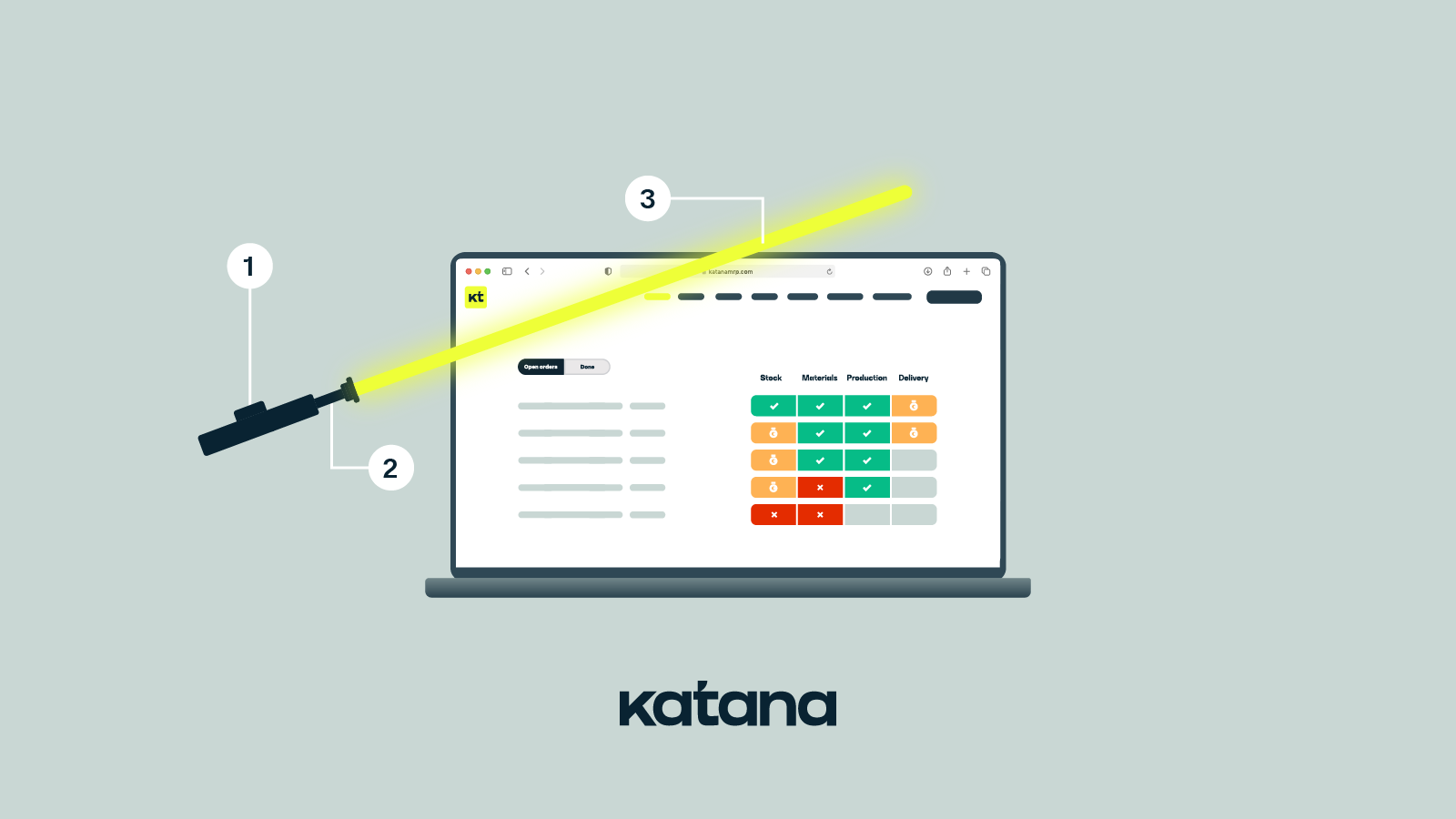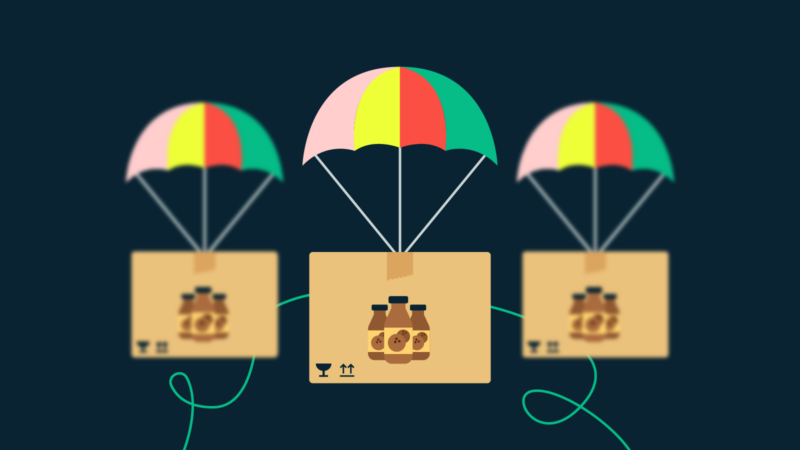What is a backorder? And why manufacturers can’t do without it
Picture the scene.
It’s a normal day for your manufacturing business. Everything is running smoothly. You take a second to appreciate the thriving factory you have built from scratch. You open up a new email that just came through on your smartphone. You read it through twice to make sure you haven’t made a mistake.
An order the size of a small moon has come in through your new e-commerce store.
Even if you worked through the night for a week, you still wouldn’t have the time to complete the entire order. What would you do? Do you send a polite email to the customer, apologizing and telling them it cannot be done? Or do you flick the order to “In Progress” on your manufacturing software and get to work?
Of course, most of us want to choose the latter but don’t want to leave the customer waiting for so long.
We know you would never sacrifice the quality of your products or risk letting your reputation slide. But there is a solution. This is where backordering comes in. If you remember Accounting 101, you might remember your professor asking you, “what does backorder mean?” But it’s been a few years now.
Maybe you are a manufacturing specialist, and all of this jargon sounds like an alien language to you. That’s why we’re here to give you an easy-to-understand backorder definition. In the next 10 minutes, you will know the “What?” but also the “How?” and the “Why?”
In short, you will have intuition when predicting the need to backorder, so you will never have to turn down a sales order again. No matter how colossal it might be.
What does backorder mean?

Backordering is the process of ordering goods that are not currently in stock. Backorders happen when the demand for a product exceeds the supply. Instead of rejecting the customer’s order, businesses will put in a backorder and deliver it to the customer once it arrives. This ensures that they can fulfill customer demand as soon as possible.
If you need to open a backorder you have a problem, but it is a positive problem!
It means your marketing is on point. Your reputation is second to none. Not only do you have customers coming back, but they’re telling their friends and family about you. This surge in sales may be unexpected but make no mistake — it’s an excellent opportunity for your business. Net sales growth is perhaps the biggest KPI for your business, but can you keep everything else up too?
Let’s boil backordering down to a single line. The simple backorder definition is this — a way to manage your customers’ expectations in an out-of-stock situation.
Backordering vs. out-of-stock
From a business perspective, backordering is generally preferable to being out of stock, as it still allows the business to generate revenue from customer demand. Backorders also tend to be less expensive than carrying extra inventory to avoid stockouts, as the cost of holding inventory generally outweighs the cost of lost sales.
When it comes to customers, though, unless you handle expectations very well, they may not be happy with a backorder situation. That’s why it’s essential to keep them in the loop as much as possible, so they know what to expect and can decide whether to wait for the product or go with a different option.
That’s it. We put the customer at the heart of it because the customer is the most important part of any business. By opening a backorder channel, you tell your customer that some or all products about to be purchased might take longer than usual to deliver.
This way, you can continue selling.
You can start shipping available products, leaving out-of-stock products to backorders to be shipped separately. If one of your products is out of stock, opening a backorder is a simple task. In the event of a multiple-item stock-out, then this becomes more complicated. The more items you have out of stock, the longer and more complex this process is.
Backordering is like having an emergency power supply — it should be used sparingly and in true stock emergencies.
What does backorder mean for your business’ response to emergencies? It is a power that can get you out of a sticky situation, and lets your business live to fight another day.
But use this power wisely.
How does a typical backorder work?
Retaining your customers is the top priority.
You are asking your customers to pay in advance for an order with a longer than usual (or even an unknown) delivery date at the time of purchase. Thus, customers are unforgiving if you cannot meet the delivery deadlines for your backorders.
You need to keep up good communication with your customers.
Let them know about the progress of their order. You can even set up shipping notifications for your Shopify store. Without excellent communication, your customer might feel they’ve been forgotten and cancel their order. This makes your situation worse, as you might now have dead stock on your hands.
When further delays occur (and they will), you need to inform your customers in advance.
You need to know this information from the purchase or production as soon as possible. This is why you need lean manufacturing software to track and manage backorders. Don’t leave customers waiting longer than they need to. In addition, you could look into alternative methods to reduce the need to backorder.
Pro tip: When a large order comes in, don’t put your entire factory on hold. You can make a partial delivery to get the order fulfillment ball rolling. To minimize losses, create a backorder straight away, that completes the order fulfillment process at a later date.
Remember, each backordered item dramatically increases the difficulty of managing it.
You have to figure out which raw materials are missing from which orders and consolidate them into one backorder. You then need to put what you can make to the top of your manufacturing queue. This way, you can ship orders for which you have the materials.
Keeping track of expected delivery dates for supply orders lets you project an accurate order fulfillment date for your customers.
As the backordered materials arrive at your warehouse, you need to be on top of what is available and which orders you can complete. This is not the time to leave tons of work-in-progress in your inventory. Each 100% finished product is another thing checked off your backorder items list.
By opening a backorder, you tell your customer that some or all products about to be purchased might take longer than usual to deliver.
This way, you can continue selling. You can start shipping available products, leaving out-of-stock products to backorders to be shipped separately. Managing backorders is not a complex exercise in case one of your products is out of stock on one sales order. It gets complicated when several products on several orders are out of stock.
As a scaling manufacturer, you need a good platform to ship partial sales orders and to prioritize your production orders and related material supply orders.
When should you create a backorder?

Knowing the right time to put in a backorder and when to decide that you’re no longer taking backorders is half the battle. Let’s go through an example from a galaxy far, far away.
Traditionally lightsabers cannot be bought. They can only be created by the Jedi who will wield them. But one enterprising Jedi thought: “What if normal people could buy a lightsaber?” So he started his own workshop, hidden on a distant asteroid (so Imperial cruisers could not find him).
Our maker has a good feeling about this — he knows there is a demand for handcrafted lightsabers and people getting in on the Jedi craze. He starts out small, and his product portfolio contains two SKUs:
- Green lightsabers
- Blue lightsabers
While this new business is getting off the ground, there is no demand to produce a lot of lightsabers. Due to this, our Jedi decides to offer next-day delivery. He is easily meeting demands, so why not?
There is only one problem.
Most of the materials he needs are common and easy to obtain. He can easily set up a reorder schedule with passing traders. But it’s another story for the most important material — the Kyber crystal that powers the blade is rare and difficult to obtain. Because of this, their availability can never be predicted. When they are available, it’s a rush to outbid the other buyers.
Thankfully he runs a lean manufacturing business and has the positive cash flow to make these unpredictable purchases.
This is fine for a light production schedule, but it is a problem that can get out of hand. One week, Luke Skywalker appears on the front cover of Jedi Magazine, posing with his green lightsaber. This sparks some serious interest in lightsabers, and demand increases, especially for green ones.
Safety stock keeps things under control for a few weeks, but then the out-of-stock situation occurs.
Keeping the next-day delivery promise is no longer possible. What does backorder mean for his bottom line? The answer is here. Our Jedi Master starts accepting backorders with an open delivery term to avoid disappointing customers. He uses cloud-based production scheduling software that allows them to:
- Ship out blue lightsabers on open sales orders while keeping green lightsabers in backorders
- Consolidate green lightsabers on backorders for production
- Plan a production, material supply, and shipping schedule for open backorders
- Inform customers of the expected delivery date for open backorders
- Get immediate notifications in case further delays occur due to production or supply chain disruptions, allowing them to inform customers promptly
The result?
All the budding Jedi in the galaxy won’t be disappointed because they know their orders will be fulfilled to their satisfaction. That way, the store won’t lose sales to the Sith lightsaber craftsman on another asteroid. The choice to backorder means fewer people turn to the dark side. Everything is okay with the backorder — the factory and the galaxy are in complete harmony.
But is this a sustainable tactic? We can show you how to maintain the harmony you built up.
Want to see Katana in action?
Book a demo to get all your questions answered regarding Katana’s features, integrations, pricing, and more.
End your backorder woes

Whether you are making heaters on Hoth or dehumidifiers on Dagobah, you can reach a point where opening a backorder becomes an extreme rarity.
Such an odd occurrence that you may end up forgetting the last time you made one. They become a memory of the old ways, about how things used to be in your workshop. It becomes less “out of the blue” and more “once in a blue moon”.
Say the Christmas rush is even greater than expected. No problem.
There’s no need to run around trying to muster the raw materials (and staff overtime) to fulfill these orders. What does backorder mean as part of your business? Wouldn’t it be great for backordering to be another string to your bow rather than a crutch? You can easily set up and manage your backorders from your computer.
You can plan a workable course of action with Katana to bring complete control to your fingertips:
- Communicate your plan of action to your whole team. They will know what they need to do and get straight to it
- Set up automatic reorder points, so stockouts don’t bother you and halt your production
- Streamline supply orders with your manufacturing flow. Always keep to your original deadlines and keep your promises to your customers
Get a demo with Katana to bring balance to the forces and never go into stockroom panic-mode again.
Table of contents
Inventory management guide
More on inventory management
Get visibility over your sales and stock
Wave goodbye to uncertainty by using Katana Cloud Inventory for total inventory control





